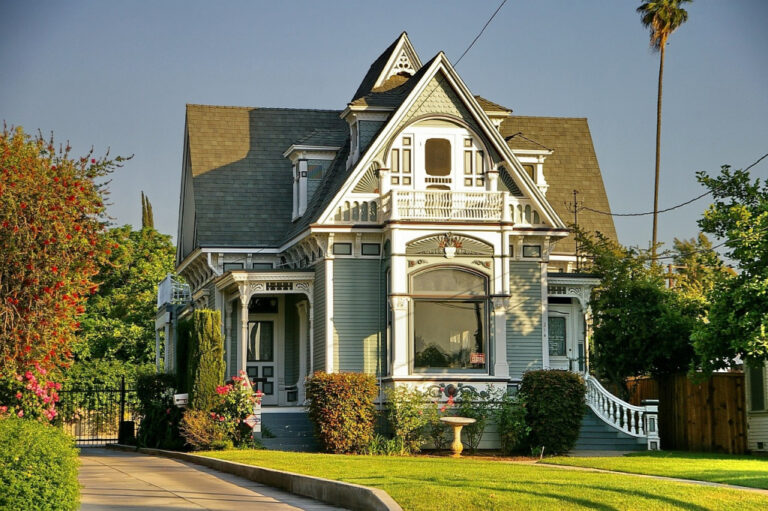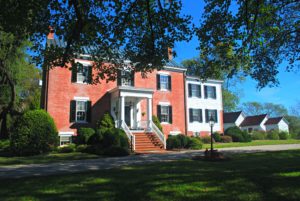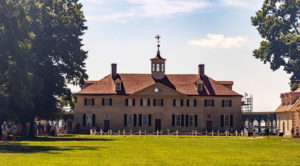Photo by Merrill Lyew on Pixabay
Virginia’s rich history is reflected in its numerous historic homes.
Many of Virginia’s historic homes showcase beautiful architectural styles and serve as important cultural and historical landmarks. It provides a tangible connection to the past as reminders of the people and events that have shaped the state’s identity.
Because of this, historic home preservation in Virginia is a critical undertaking. It aims to protect the state’s rich cultural heritage.
However, preserving these historic homes is a challenging task. It requires a delicate balance between maintaining historical accuracy.
It also involves ensuring the homes remain livable and functional for modern-day living. It can also be a challenging financial endeavor for homeowners who need more resources to undertake preservation efforts.
Nonetheless, there are strategies and success stories that inspire us to continue our efforts toward the preservation of historic homes in Virginia.
This article will explore the challenges faced in preserving historic homes in Virginia.
We will also navigate the strategies used to protect historic properties and the success stories demonstrating the importance of historic home preservation in the state.
Challenges of Preserving Historic Homes in Virginia
Historic preservation in Virginia is a challenging task that requires careful consideration. Because of this, you may encounter difficulties along the way.
However, with proper planning and collaboration with experts in the field, you can overcome these challenges and ensure that future generations can appreciate and learn from the state’s rich history.
To give you an idea, here are some of the challenges you might face:
Maintaining the Structural Integrity of Historic Homes
Maintaining the property’s structural integrity is one of the most significant challenges of home preservation.
Many homes in Virginia are built with materials and construction techniques that need to be updated. It makes them vulnerable to damage and decay over time.
Historic homes also often have unique features. It includes intricate woodwork, ornate plasterwork, and decorative tile requiring special care and maintenance.
Preserving these historic features while also making the homes functional for a modern-day living can be a difficult balance to strike.
For example, modern electrical systems, plumbing, and HVAC systems must be integrated into the home. It must be done while maintaining the original structure’s integrity, which can be a complex process that requires specialized knowledge and expertise.
Finding the Necessary Funding
Another significant challenge is finding the necessary funding.
Historic home preservation is a costly endeavor that requires substantial financial resources. Many of these homes are privately owned. It means that the responsibility for preservation falls entirely on the homeowner’s shoulders.
Finding the funds for restoration and maintenance can be a significant hurdle for homeowners. It is particularly true for those who lack the means to invest in their property.
Funding for historic home preservation projects may be limited or difficult to obtain, particularly in rural areas with less access to resources and support.
Navigating Local Regulations and Zoning Laws
Historic home preservation also requires navigating local regulations and zoning laws.
Local governments may have strict regulations regarding what can be done with historic homes, particularly those designated as historic landmarks.
Regulations may include restrictions on the types of modifications that can be made to the house. It includes limiting the types of materials used for repairs or restoration.
Zoning laws may also play a role in historic home preservation, particularly in urban areas where homes may be subject to height or setback restrictions.
These laws can make restoring or maintaining historic homes challenging, mainly if the house has fallen into disrepair.
Strategies for Preserving Historic Homes in Virginia
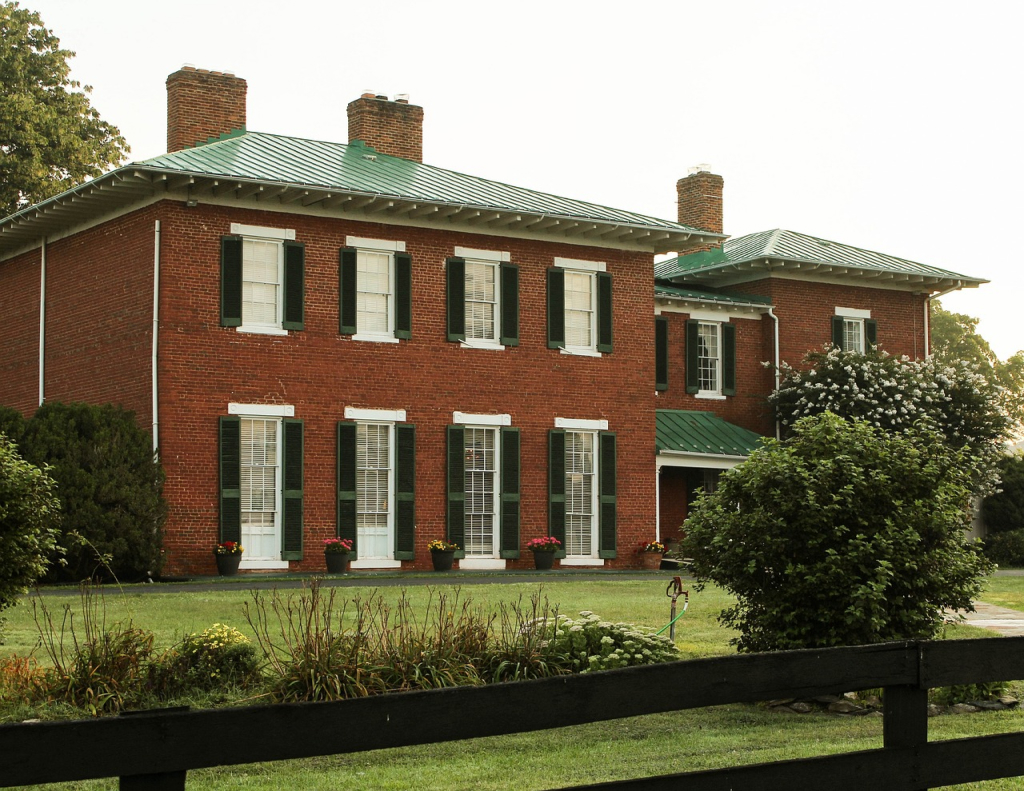
Photo by JamesDeMers on Pixabay
Historic preservation in Virginia is crucial and challenging because it can be expensive and tricky to balance history with modern needs. However, there are ways to keep the home’s history and charm while making it functional for modern living.
Conduct a Thorough Assessment
It is essential to assess the current condition of your property, especially when you own a historic home.
An assessment can help identify areas of the house that require immediate attention and areas that may need repairs in the future.
For example, if your home’s roof is in poor condition, it is essential to prioritize its repair before it leads to more significant damage.
A professional preservationist can assess and provide a detailed report of house issues.
It includes recommended repairs and maintenance needs. It can also help you create a long-term plan for maintaining your historic home.
The plan can consist of regular maintenance tasks, such as cleaning gutters, replacing worn-out components, and inspecting the home’s structural integrity.
By conducting regular assessments and developing a long-term preservation plan, you can ensure that your historic home is in good condition and continues to tell its unique story for generations.
Use Historical Accuracy in Restoration
When restoring a historic home in Virginia, it is crucial to maintain historical accuracy to ensure that the house retains its cultural and historical significance. It involves using materials, techniques, and styles consistent with the home’s original construction.
Preservation organizations and local historical societies can provide valuable guidance on maintaining historical accuracy during restoration efforts.
They can also provide information on the materials and techniques used during the home’s original construction and any applicable regulations or guidelines to ensure preservation.
For example, restoring the home using period-appropriate methods and materials can help maintain historical accuracy if the home features original woodwork.
It may involve using hand tools and techniques such as hand-planing and hand-carving to replicate authentic craftsmanship. Using historically accurate paint colors, wallpaper, and other decorative elements can also help maintain historical accuracy.
Regular Maintenance and Inspection
Regular maintenance and inspections are essential in preserving historic homes in Virginia. Maintaining your home through regular upkeep can prevent issues from becoming problems that require costly repairs in the future.
Scheduling regular inspections with a professional preservationist can help identify areas of the home that require attention and prevent issues from becoming more severe.
A preservationist is trained to identify potential problems and can offer solutions that will help preserve the home’s historical integrity while ensuring it remains functional and livable.
During an inspection, the preservationist will evaluate the condition of the home’s foundation, roof, walls, and other structural components. They will also inspect for any signs of damage, such as water intrusion, rot, or insect infestations.
Additionally, they will check the home’s electrical and plumbing systems, ensuring they are in good working condition. You can avoid expensive repairs by identifying and addressing issues ahead.
Regular maintenance can also help extend the life of your home’s components, such as the roof or HVAC system, reducing the likelihood of needing to replace them entirely.
Overall, regular maintenance and inspections are crucial to preserve a historic home.
By investing in regular upkeep, you can help ensure that your home remains an important cultural and historical landmark for future generations.
Preserve the Home's Contextual Surroundings
Preserving the contextual surroundings of a historic home is crucial to maintaining its historical and cultural significance.
It involves preserving not only the structure of the home but also its surrounding landscape, fencing, and other features that contribute to its historical context. Features help to tell the story of the home’s origins and place within the surrounding community.
For example, if a historic home is situated in a particular landscape or neighborhood, preserving that landscape or community can help visitors to understand the home’s historical significance.
Similarly, if the home has a fence that dates back to its original construction, preserving it can help maintain the property’s authenticity.
Preserving a historic home’s contextual surroundings can also create a sense of continuity between the past and present.
By preserving the home’s surroundings, it is possible to ensure that future generations can appreciate and understand its historical and cultural significance in its original context.
If you want to preserve the contextual surroundings of a historic home, it is essential to work closely with preservation organizations, local historical societies, and government agencies.
Take Advantage of Tax Incentives
Taking advantage of tax incentives is an effective strategy for historic home preservation in Virginia.
The federal government and the state of Virginia offer tax incentives to homeowners who undertake preservation efforts on their historic properties.
The federal government provides tax incentives through the Historic Preservation Tax Incentives Program, which offers a 20% tax credit for rehabilitating historic buildings in the National Register of Historic Places.
To be eligible for this tax credit, the rehabilitation work must meet specific standards and guidelines established by the National Park Service.
In addition to the federal tax incentives, Virginia offers its tax incentives for historic home preservation efforts.
The Virginia Department of Historic Resources provides tax credits for up to 25% of eligible expenses in rehabilitating certified historic structures.
Qualified expenses include rehabilitation, restoration, and preservation work that meets the department’s guidelines.
It is important to note that the tax incentives offered by the federal government and the state of Virginia have specific requirements and guidelines to be eligible for the tax credits.
Homeowners interested in taking advantage of these tax incentives should consult with the Virginia Department of Historic Resources and local historical societies to determine eligibility and receive guidance on the application process.
Visit their “Detailed Application Process” document to learn more.
Hire Qualified Preservationists
When it comes to preserving a historic home, it is essential to hire a qualified preservationist. They are someone who has specialized knowledge and experience in the field of historic preservation.
They can restore historic homes using historical accuracy and ensure that any repairs or renovations made to the house are consistent with the original construction.
Hiring a qualified preservationist is essential. They can help ensure the work is correct and the home’s historical significance is maintained.
They can also guide the use of appropriate materials, techniques, and styles consistent with the home’s original construction.
Local historical societies and preservation organizations can be an excellent resource for finding qualified preservationists. They can provide recommendations for preservationists who have experience working on homes similar to yours.
They can provide guidance on what to look for when hiring a preservationist and what qualifications to consider.
When looking for a preservationist, it is essential to consider their experience and credentials. Some preservationists may have specific certifications or degrees in historic preservation, architecture, or a related field.
It may be helpful to ask for references and review their past work portfolio to ensure they have experience working on similar homes.
Open Communication With Organizations and Government Agencies
Maintaining open communication is an essential strategy for historic home preservation.
It involves staying in touch with preservation organizations, local historical societies, and government agencies that can provide valuable resources and support for your preservation efforts.
By maintaining open communication, you can stay up-to-date on preservation initiatives, workshops, and training opportunities that may be available to you.
It can help you learn more about the best practices for historic home preservation, available funding or tax incentives, and how to find qualified preservationists.
Regular communication with preservation societies and local historical organizations can also help you connect with other homeowners undertaking similar preservation efforts.
By sharing knowledge and experiences, you can learn from others and build a support network.
Government agencies such as the Virginia Department of Historic Resources can also provide assistance and guidance on preservation efforts.
They can help you identify available grants, tax incentives, or other resources that can support your preservation project.
Success Stories in Virginia Historic Home Preservation
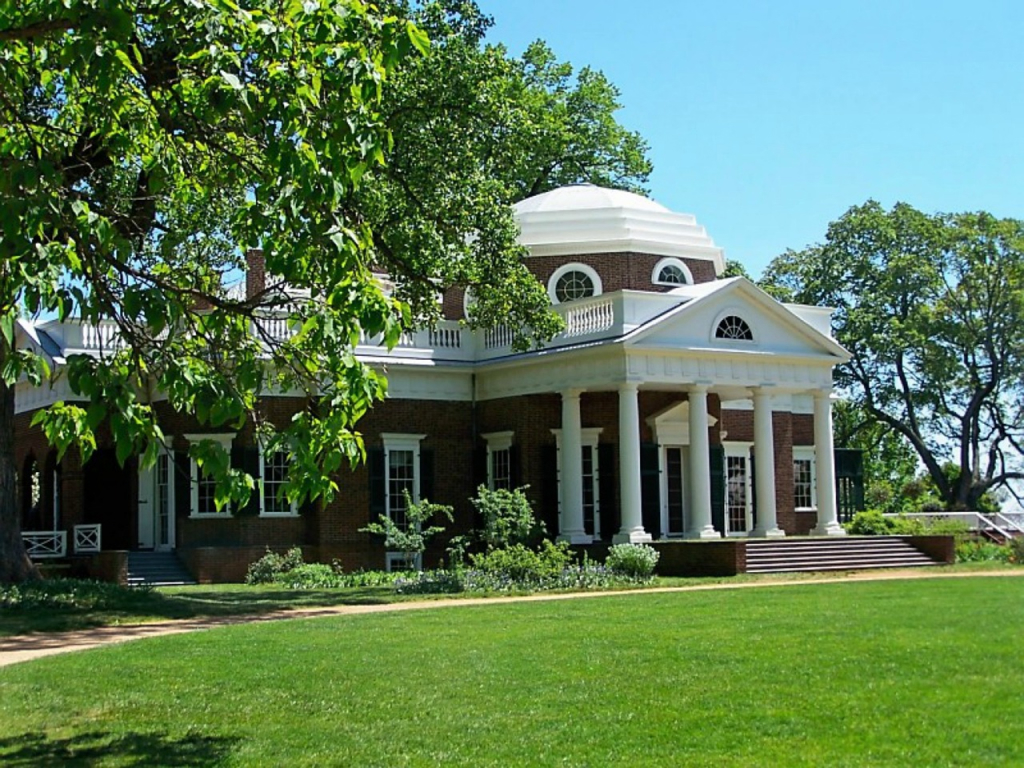
Photo by Brandi Day on Pixabay
Over the years, historical homes have fallen into disrepair, and their preservation has become a top priority for communities across Virginia.
Fortunately, numerous successful historic home preservation projects have breathed new life into these iconic structures.
Virginia has set an example for historic preservation efforts nationwide, from meticulous restorations to innovative adaptive reuse projects.
Here are some of the most inspiring success stories in Virginia’s historic home preservation efforts, highlighting the strategies and techniques used to bring these homes back to their former glory.
The George Wythe House
The George Wythe House
The George Wythe House in Williamsburg, Virginia, is one of the state’s most significant historic homes and is now a museum beautifully restored to its 18th-century appearance.
It was built in 1755 for George Wythe, a signer of the Declaration of Independence and a prominent lawyer and judge.
The preservation of the George Wythe House involved a comprehensive approach that included extensive research, careful restoration, and ongoing maintenance.
The restoration project was a collaborative effort between the Colonial Williamsburg Foundation and the National Park Service.
They conducted detailed research to understand the house’s original appearance and layout using historical documents, archaeological evidence, and other sources.
The restoration process involved several key steps, including repairing and replacing damaged or missing parts of the building, such as the roof, windows, and doors.
The team also carefully examined the interior and exterior of the house to identify any areas that needed attention, such as plasterwork, woodwork, and flooring.
They used traditional materials and techniques to ensure the restoration was in keeping with the house’s original construction. There are also regular inspections, repairs, and cleaning to ensure that the house remains in good condition.
The museum staff also works to educate visitors about the history and significance of the house, providing tours and exhibits that highlight the life and times of George Wythe and his family.
Monticello
Monticello
Photo by JamesDeMers on Pixabay
Monticello is a stunning example of historic home preservation, which has been ongoing for many years.
The design of the home was made by Thomas Jefferson himself, the third president of the USA. He incorporated his unique style and architectural genius. The house is located near Charlottesville, Virginia, and is now a National Historic Landmark.
The restoration of Monticello has been a significant undertaking, and preserving the home’s original features and details has been a top priority.
The restoration work has included a range of efforts, including meticulous research and analysis of original documents, photographs, and artifacts. The restoration team has also used cutting-edge technology to recreate the actual paint colors, fabrics, and furnishings.
The restoration work has also included repairing and replacing damaged or deteriorated materials. For instance, the team used Jefferson’s sketches and notes to recreate the windows and doors accurately.
They have also restored unique features, such as the domed ceiling in the entrance hall and the intricate ironwork on the balcony.
Today, visitors to Monticello can experience the home as it was in Jefferson’s time. They can tour the house and see the carefully restored details, including the ornate plasterwork, period furniture, and original artwork.
They can also learn about his life and legacy, including his role in shaping American democracy and his passionate advocacy for education and scientific inquiry.
The Poe Museum
The Poe Museum
The Poe Museum in Richmond, Virginia, is another prime example of successful historic home preservation.
The museum is in a historic home that once belonged to the Poe family and has been beautifully restored to its original condition.
The restoration process began with a comprehensive assessment of the building’s condition.
It involved inspecting the structure and identifying areas needing repair or restoration.
Next, the restoration team researched the home’s history and architectural features to ensure the restoration was as accurate and authentic as possible.
Once the research and assessment phase was complete, the restoration team repaired and restored the building while preserving as much of the original material as possible.
The team also meticulously recreated missing features using traditional methods and materials, such as decorative trim and moldings.
Today, the Poe Museum is a beautiful and engaging destination for anyone interested in the life and work of Edgar Allan Poe and historic preservation.
The museum is a testament to the importance of preserving our cultural heritage and the hard work and dedication of those committed to doing so.
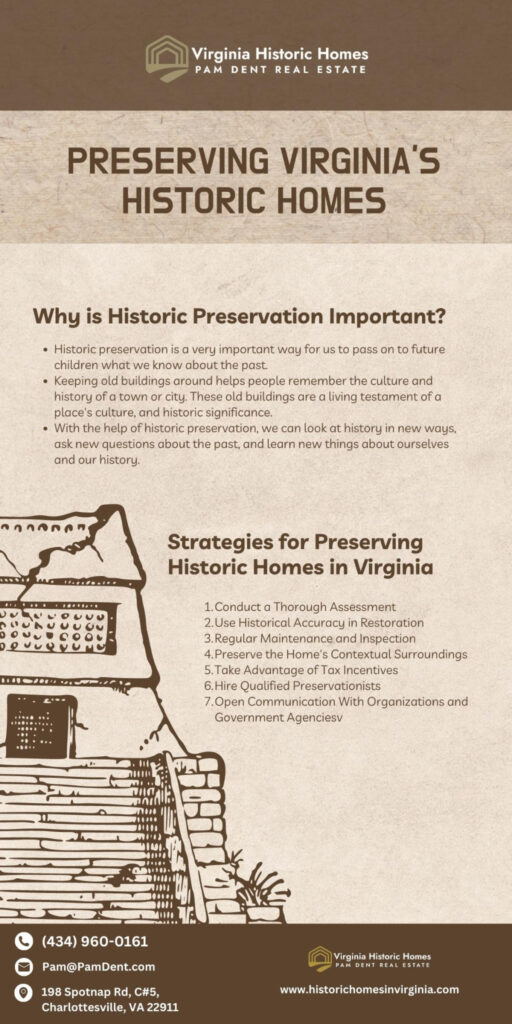
Conclusion
Preserving historic homes in Virginia is a significant undertaking that requires a delicate balance between maintaining historical accuracy and ensuring the homes remain livable and functional for modern-day living.
Maintaining the structural integrity of the homes, finding the necessary funding, and navigating local regulations and zoning laws are some of the challenges in historic preservation in Virginia.
Some strategies for preserving historic homes include conducting a thorough assessment, historical accuracy in restoration, and regular maintenance and inspection.
These strategies can help ensure that historic homes in Virginia continue to tell their unique stories for generations to come.
If you want to learn more about preserving historic homes in Virginia, please feel free to book an appointment with me. You can reach me at (434) 960-0161 or send me an email at Pam@PamDent.com.
To stay up-to-date on the latest news and updates about historic properties in Virginia, we encourage you to follow us on our social media platforms:
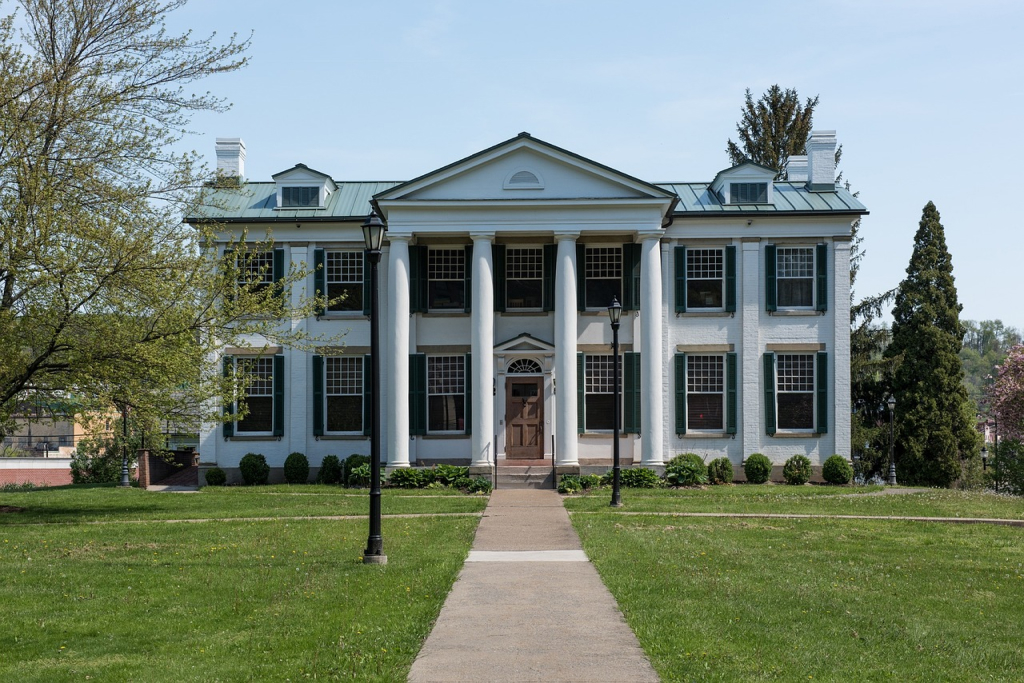
Photo by David Mark on Pixabay
Frequently Asked Questions
What is the Virginia State Historic Preservation Plan?
The Virginia State Historic Preservation Plan is a document that outlines the goals and strategies for preserving the state’s historic resources.
It is a comprehensive plan that covers everything from archaeological sites to historic buildings and landscapes.
The plan provides guidance and support for individuals and organizations involved in historic preservation efforts in Virginia.
How can we preserve historic places in Virginia?
There are several ways to preserve historic places in Virginia. It includes restoration, rehabilitation, preservation, and adaptive reuse.
Restoration involves restoring a historic building to its original condition, while rehabilitation entails adapting it for a new use while retaining its historical character.
Preservation involves maintaining the existing condition of a historic building, and adaptive reuse involves finding a new use for a building that is no longer used for its original purpose.
What organization was important to Virginia's history and preservation of numerous buildings?
The Virginia Department of Historic Resources (DHR) is the state agency responsible for historic preservation efforts in Virginia.
It provides technical assistance and support to individuals and organizations involved in preservation efforts, including site surveys, documentation, and planning.
The DHR also administers several state and federal grant programs that fund preservation projects in Virginia.
How do you preserve historical places?
Preserving historical places involves a range of strategies, including conducting regular maintenance and repairs to prevent deterioration and damage.
It also involves developing a comprehensive preservation plan that outlines goals and strategies for preserving the historical place.
